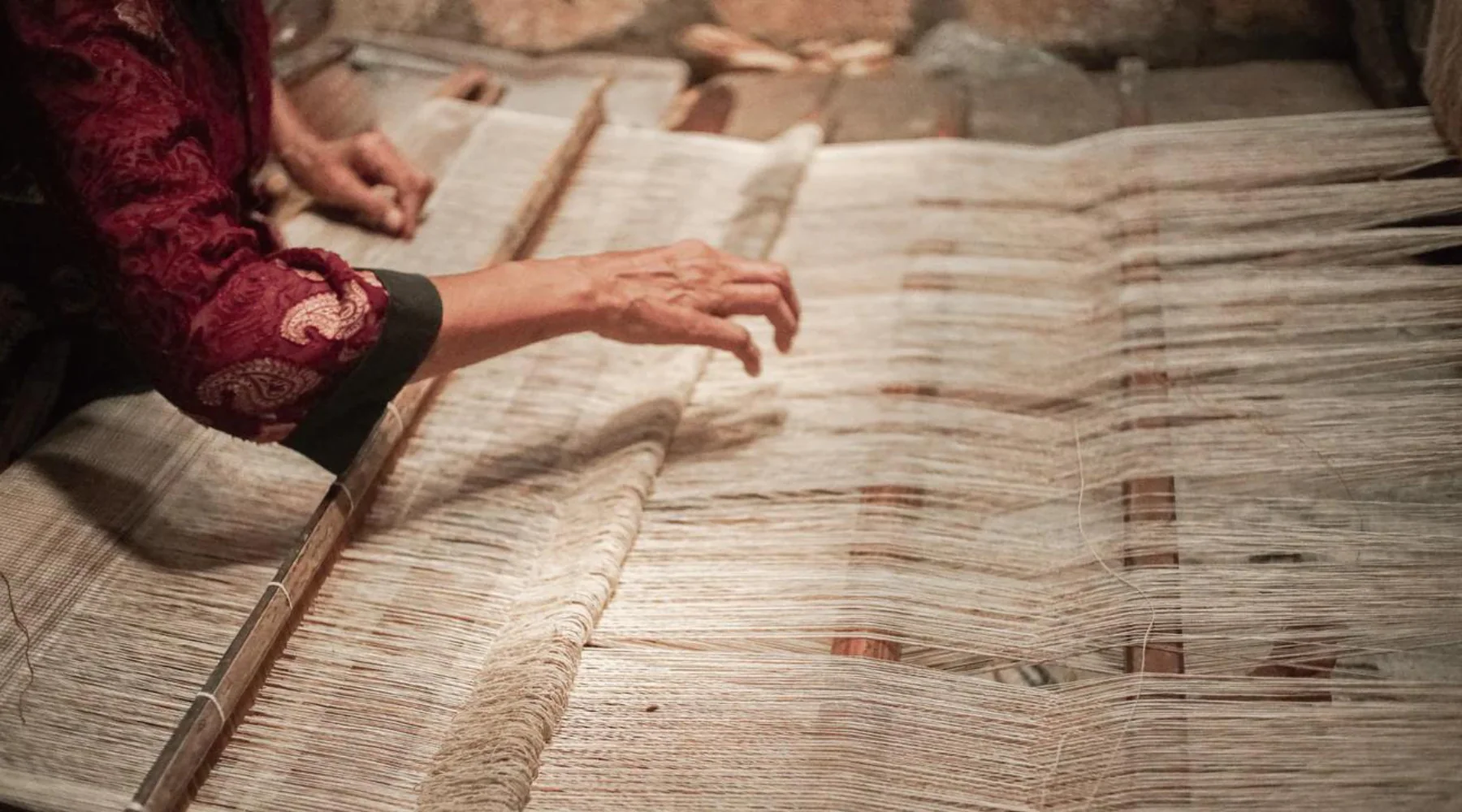When Malipeddi Bhagyawati sat down to spin, as part of the lecture-demonstration of the various processes involved in the making of Patnulu khadi, organised in a small school in Bengaluru, she was in for a surprise.
The 20-odd teenaged students stumped her by jumping to answer what 'balni' or 'eku' is. They not only knew that the single spindle charkha she was using was rare these days -- although it was made uber popular by Gandhi -- they also knew the various processes of spinning, from ginning to carding.
The 60-year-old from Ponduru in Andhra Pradesh, the area where the unique Patnulu khadi is made, had already been to a couple of such lec-dems in the city before she came to this particular school in the hinterlands of Bengaluru.
For Samyuktha Gorrepati, a textile designer from Hyderabad, who has been trying to help the weaving community, including spinners, build sustainable weaver business enterprises for the last couple of years, this awareness shown by the teenagers is one of the missing links that has led to the downfall of handloom weaving in India.
"Traditionally, weavers cannot exist without spinners and they both cannot exist without an informed clientele who could tell the difference between the output of a single spindle loom like the one used in Ponduru and, say, the ambar charkha, which the khadi industry favours as it can accommodate up to 12 spindles and are easier to handle for large-scale productions," Gorrepati told PTI.
It is only when people know how delicate the process of even spinning a yarn for making fabric as delicate as Patnulu, will they be ready to pay the price that would keep these skilled craftsmen in business, said Gorrepati.
As for the reason why a bunch of students should know their weft from the waft is because in their school, Vidyakshetra Gurukul in Kengeri, weaving and spinning are part of the curriculum.
But for 16-year-old Aradhika, preparing for her Class X exams, spinning is obviously much more than school syllabus. For one, she has been spinning for nine years now.
"I think it's a life skill worth learning, like say, swimming. Learning to spin and weave means you get to make your own clothes," said Aradhika.
Aradhika also said when she went for a field trip to Ponduru last year, she realised what a struggle it is for weavers and spinners to make a decent living.
Her friend, 17-year-old Vanya, who is also preparing for her Class 12 exams, taking time off to go on visits like the one to Ponduru, is as important as cramming for exams.
"We saw at Ponduru how weaving is not done in isolation. It was more like the whole town had gotten together to enable weavers. It was a sight to behold," said Vanya.
Gorrepati agreed that the students of Vidyakshetra were on a different level when it came to awareness of sustainable practices.
"But, we have been doing this for a while, and this time around, we also went to another school in Yelahanka, which was not an alternative one. Definitely, something is shifting in people about these things," said Gorrepati.
The shifting awareness among people is something that Mysuru-based artist K L Sachidananda, who fell in love with spinning almost seven years ago when he visited a weaving centre in Melukote, is willing to vouch for as well.
Sachidananda said he took it upon himself to go to schools, not only in Mysuru, but also in Bengaluru, when he decided to pass on the joys of spinning.
"After interacting with children, I started believing even more that maybe it is possible that the tide will turn against fast fashion and consumption, the endless greed that is destroying our society. It is for sure a steep, uphill climb, but not impossible," said Sachidananda.
Fifty-five-years-old Minakshi Prabhu from Indira Nagar, Bengaluru, another champion of spinning, who learnt spinning from Sachidananda almost 16 months ago, and who too organise spinning workshops, including for school students, said there are many reasons why one should take up spinning.
"When it comes to children, I think focus is a good enough reason. The time spent away from all those devices that they have access to these days, will do them good," said Prabhu.
She also said when the person gets the hang of spinning and commits to it, he or she can plug into the system that lets weaving flourish side by side.
"Making your own clothes from the yarn that you spin is the absolute game changer. What starts as fun, turns into passion and before you know it you are championing the cause of the weavers," added Sachidananda.
Between the members of Let's Spin, as Sachidananda and Prabhu and other serious spinners call their community, and the new converts, Sachidananda said he is able to give regular work to about half a dozen weavers in Melukote.
As for Aradhika, she knew she wanted to do something with spinning and weaving in future, for a career, when she set foot in Ponduru.
"It's a pity that skilled jobs like weaving and spinning should go out of business just because it is not feasible to pursue. I want to be the change and be the 1% of the future generation that choose to weave or spin. Besides, spinning makes me happy," said Aradhika.






























